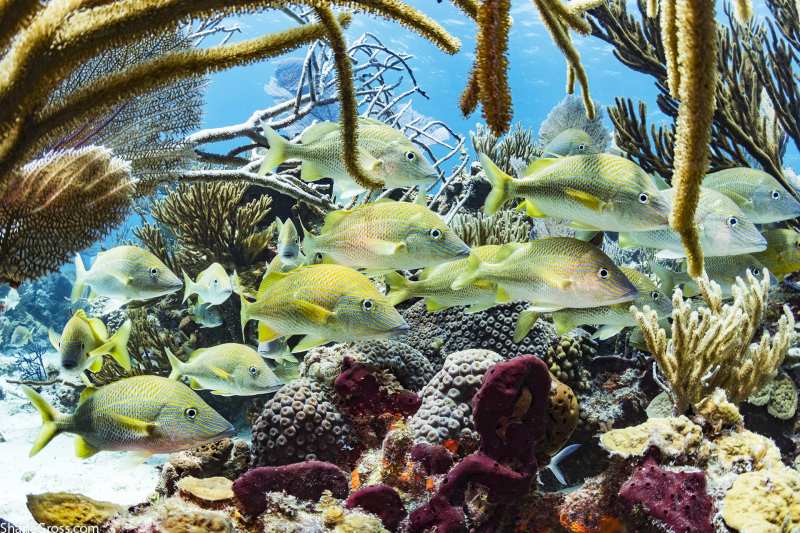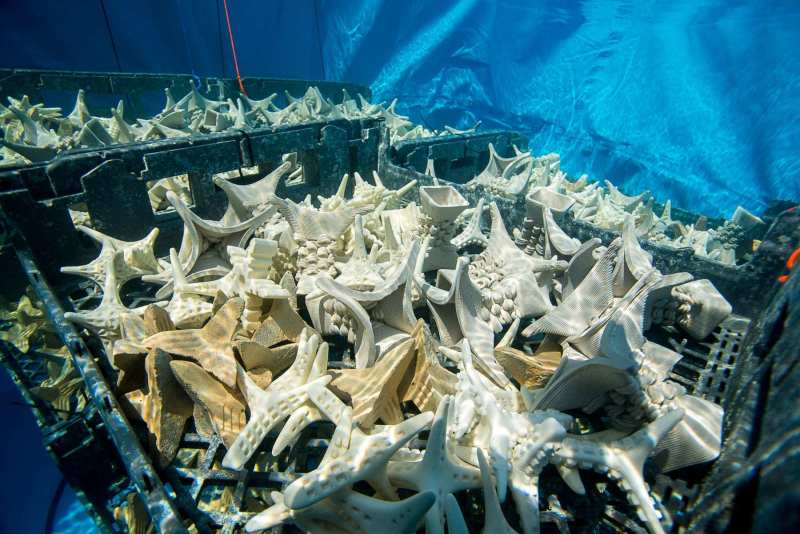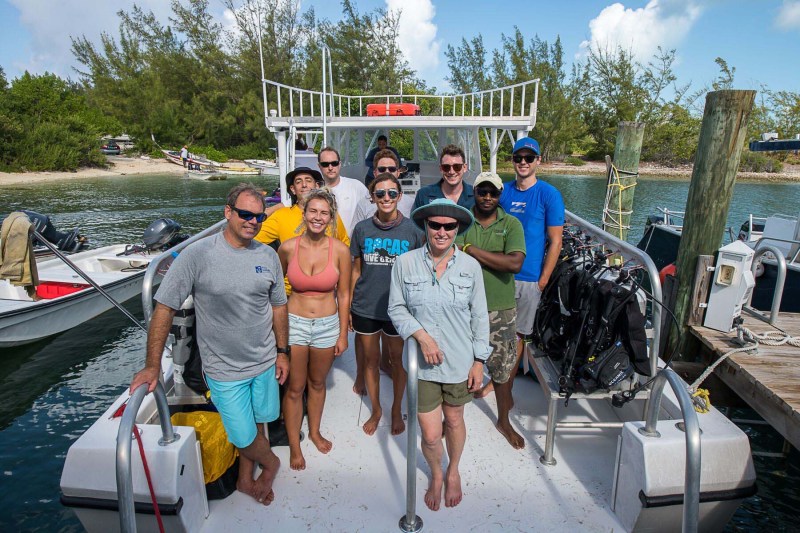“The lessons learned here have the potential to guide coral restoration efforts around the world.”
– Craig Dahlgren, Executive Director of the Perry Institute for Marine Science
Coral reefs are natural treasure troves in the Bahamas: they harbor thousands of marine species, support over 40,000 jobs in marine tourism and, each year, bolster a $65 million commercial fishing industry. Yet, coral reefs are declining at an alarming rate: studies suggest Caribbean reefs could be wiped out in less than 50 years without large-scale conservation initiatives.

Above: A flourishing coral reef. (Shane Gross)
Rising seawater temperatures due to climate change, dredging and pollution are just a few factors endangering these national wonders in the Bahamas. How can we help our coral reefs survive and flourish into an uncertain future?

Above: A dead coral reef
OUT-PLANTING THOUSANDS OF BABY CORALS IN THE BAHAMAS
Here at Perry Institute for Marine Science, I am excited to share how recent research on coral reproduction is enabling us to out-plant tens of thousands of baby corals onto struggling Bahamian reefs. This September, myself and a team of scientists from the Perry Institute for Marine Science, the Cape Eleuthera Institute, The Nature Conservancy, SECORE International, the California Academy of Sciences, Shedd Aquarium and the Henry Doorly Zoo and Aquarium gathered at the Cape Eleuthera Island School for a rare oceanic phenomenon – coral spawning.
For many species of coral, spawning takes place at night, just a handful of times each year. When corals spawn, they release millions of sperm and eggs into the ocean. It looks like an underwater blizzard, as swirling storms of white, orange and pink gametes envelop the reef. Our team harvested these colorful gametes at the dive site, John Millar’s Blue Hole, and with them, created our very own “coral kindergarten.” In other words, we now have thousands of baby corals growing in situ at the Cape Eleuthera Institute, ready to out-plant onto struggling reefs.
Above(left to right): Orbicella faveolata spawning, Special collection nets to capture coral eggand sperm. (SECORE International / Paul A. Selvaggio), Pseudodiploria strigosa spawning. (Liv Williamson)
BUILDING OUR “CORAL KINDERGARTEN”
In the ocean, coral eggs undergo fertilization, transform into swimming larvae (i.e., baby corals), and settle onto hard, rocky substrates (i.e., rocks, fragments, dead coral or other hard surfaces) where they grow into larger coral colonies. Settlement is a crucial step in the life history of corals, as swimming babies have just one chance to “get it right.” In other words, once baby corals settle onto a substrate, they remain stuck in the same spot for the rest of their lives, and are vulnerable to being smothered by fierce algae and other competing corals or invertebrates. Thus, at Cape Eleuthera Institute, our mission was simple: increase coral survivorship by releasing baby corals onto safer substrates suitable for long-term settlement.

Above: Settlement substrates. (SECORE International / Paul A. Selvaggio)
First, we collected the sperm and eggs of two important reef-building species: mountainous star coral (Orbicella faveolata) and symmetrical brain coral (Pseudodiploria strigosa). Next, we fertilized the eggs in the lab. Lastly, we released the baby corals onto home-made substrates. Made of either cement or ceramic, our unique settlement substrates exhibit a variety of different shapes and features, host approximately 10 baby corals each, and, as I write, sit in safe, contained salt-water pools on Eleuthera (a.k.a., coral kindergartens).
2) Lily Haines (Cape Eleuthera Institute) and John Parkinson (SECORE) hold thousands of baby star corals in a small container. Soon, the swimming babies will be poured into salt-water pools where they will settle onto rocky substrates, and grow into mountainous coral heads. (SECORE International / Paul A. Selvaggio)
3) In-water view of a coral kindergarten. (SECORE International / Paul A. Selvaggio)
WHAT’S NEXT?
Our team will SCUBA dive onto local reefs, out-planting and tagging substrates as we go. In this way, we can help baby corals find a suitable place to settle in the wild, ensure their permanent substrate home is in ‘safe zone,’ away from harmful algae and monitor their survival and growth rates over time. It is our hope that the grooves, valleys and protrusions within the arms of our home-made settlement units will protect our corals from predatory fish and invertebrates. What’s more, each substrate is designed so it can be easily jammed into dead coral or rocky crevices on the reef, eliminating the need to use epoxy or nails for out-planting.
If successful in the Bahamas, our new coral restoration research could help us grow tens of thousands of corals each year and in-turn, upscale reef-building efforts across our 100,000-square-milearchipelago. The wide-spread implementation of coral nurseries, as well as novel approaches to coral restoration such as this one, gives us hope that we can achieve our goal to reverse the decline of Bahamian coral reefs.
“Our research into using coral spawning to rebuild threatened and endangered coral populations may be a true game changer – allowing us to cost effectively reseed reefs with corals on an unprecedented scale, and selectively breed corals to adapt to the conditions that they are likely to face in the future as climate change affects our oceans,” said Craig Dahlgren, Executive Director of the Perry Institute for Marine Science.

The visiting coral researchers are all smiles as they prepare to dive at John Millar’s Blue Hole, and wait for coral spawning. (SECORE International / Paul A. Selvaggio)
A HUGE thank you to all visiting scientists and partnering organizations: Cape Eleuthera Institute, The Nature Conservancy, SECORE International, the California Academy of Sciences, Shedd Aquarium and the Henry Doorly Zoo and Aquarium.



